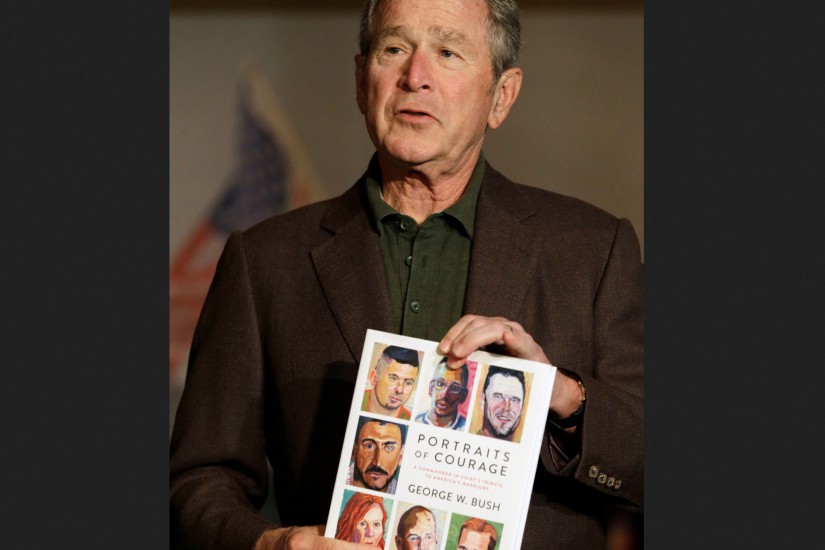Nostalgia takes root easily, because history is easy to forget. But in Bush’s case, the history is easily accessible and extremely well-documented. George W. Bush did not make a simple miscalculation or error. He deliberately perpetrated a war crime, intentionally misleading the public in order to do so, and showed callous indifference to the suffering that would obviously result. His government oversaw a regime of brutal torture and indefinite detention, violating every conceivable standard for the humane treatment of prisoners. And far from trying to “atone,” Bush has consistently misrepresented history, reacting angrily and defensively to those who confront him with the truth. In a just world, he would be painting from a prison cell. And through Alter and Schjeldahl’s effort to impute to Bush a repentance and sensitivity that he does not actually possess, they fabricate history and erase the sufferings of Bush’s victims.
First, it’s important to be clear what Bush actually did. There is a key number missing from both Alter and Schjeldahl’s reviews: 500,000, the sum total of Iraqi civilians who perished as a result of the U.S. war there. (That’s a conservative estimate, and stops in 2011.) Nearly 200,000 are confirmed to have died violently, blown to pieces by coalition air strikes or suicide bombers, shot by soldiers or insurgents. Others died as a result of the disappearance of medical care, with doctors fleeing the country by the score as their colleagues were killed or abducted. Childhood mortality and infant mortality shot up, as well as malnutrition and starvation, and toxins introduced by American bombardment led to “congenital malformations, sterility, and infertility.” There was mass displacement, by the millions. An entire “generation of orphans” was created, with hundreds of thousands of children losing parents and wandering the streets homeless. The country’s core infrastructure collapsed, and centuries-old cultural institutions were destroyed, with libraries and museums looted, and the university system “decimated” as professors were assassinated. For years and years, suicide bombings became a regular feature of life in Baghdad, and for every violent death, scores more people were left injured or traumatized for life. (Yet in the entire country, there were less than 200 social workers and psychiatrists put together to tend to people’s psychological issues.) Parts of the country became a hell on earth; in 2007 the Red Cross said that there were “mothers appealing for someone to pick up the bodies on the street so their children will be spared the horror of looking at them on their way to school.” The amount of death, misery, suffering, and trauma is almost inconceivable.
These were the human consequences of the Iraq War for the country’s population. They generally go unmentioned in the sympathetic reviews of George W. Bush’s artwork. Perhaps that’s because, if we dwell on them, it becomes somewhat harder to appreciate Bush’s impressive use of line, color, and shape.
